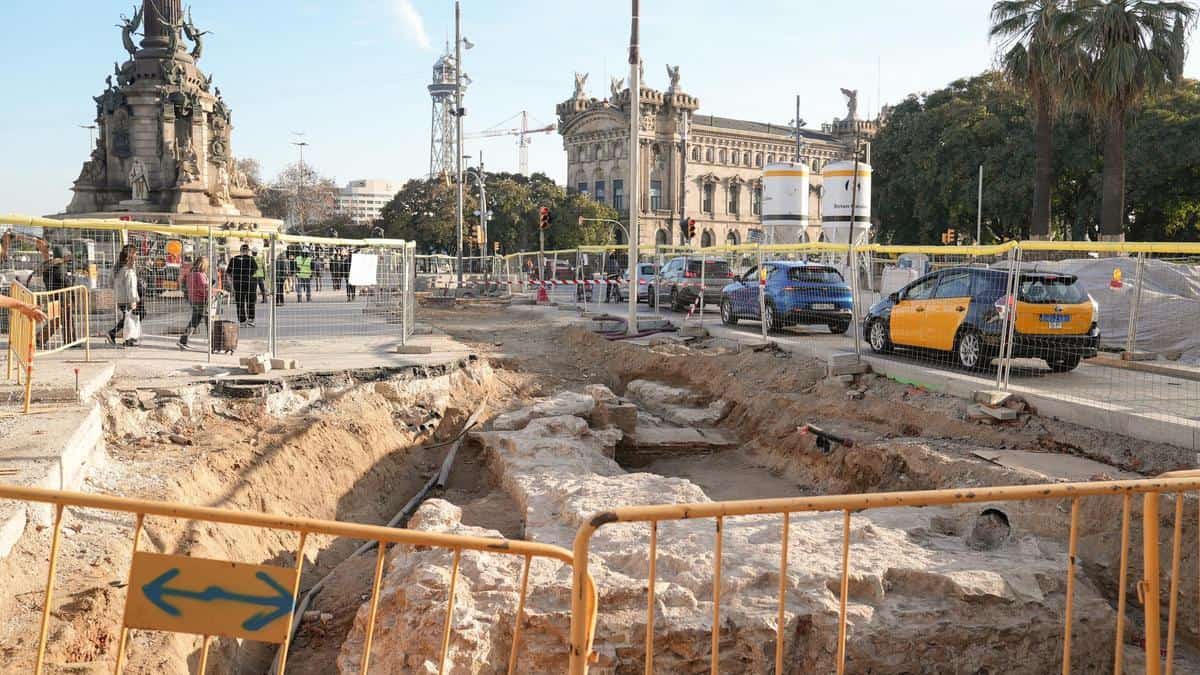Redevelopment work on Barcelona’s Rambla has brought to light a rich history dating back centuries. Recently, important finds have been discovered, including a 13th century wall and remains of the ancient Casernes de Drassanes, dating back to the 18th century.
Since last summer, work has revealed a series of archaeological remains that shed light on the urban evolution of the city over the centuries.
The excavation work has uncovered up to 20 meters of the first medieval wall of the city, built in the 13th century by order of King Pere II el Gran in 1285.
This fortification was intended to protect the city during war conflicts, closing it completely except for the part facing the sea.
The wall rises up to three meters high in some sections, showing the skill and ingenuity of the builders of the time.
In addition to the 13th century wall, there are other archaeological remains
Along with the remains of the wall, vestiges of the old Casernes de Drassanes, built at the end of the 18th century, have also been found. These military installations were erected in the same period as the original Rambla project, but were demolished in 1935.
Excavation work has revealed the barracks’ parade ground, located in front of the Defense Delegation building, providing a fascinating insight into Barcelona’s military history.
These archaeological discoveries offer a unique window into the urban transformation of Ciutat Vella over the centuries. After the end of the war, the Consell de Cent took on the responsibility of fortifying the city, building gates and reinforcing the existing walls.
In the case of the Casernes de Drassanes, they were erected in the area now occupied by the Arts Santa Mònica cultural center and the Portal de la Pau, before being replaced by more modern military installations on the outskirts of the city.
The history of the Casernes de Drassanes reflects the political and military changes that Barcelona experienced throughout the 20th century. Despite being occupied by the military until 1936, they were closed and replaced by new facilities during the dictatorship of General Primo de Rivera.
However, its legacy lives on in the memory of the city, and the Drassanes have been restored to house the Maritime Museum, thus preserving its historical importance for future generations.
Archaeological discoveries beneath Barcelona’s Rambla offer a fascinating insight into the evolution of the city over the centuries. From the construction of medieval walls to the building of military casernes, these findings are tangible testimonies of Barcelona’s glorious past.




